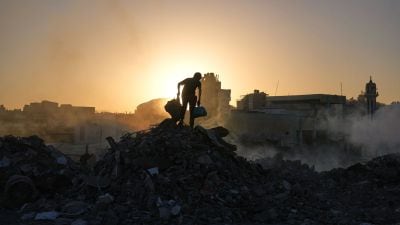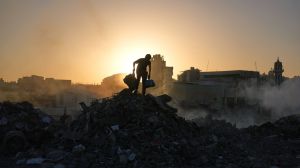Lifting Chandigarh slums from squalor
HE drives every day from his residence in Chandigarh’s posh Sector 8 to the lanes of Janta Colony in Nayagaon....

HE drives every day from his residence in Chandigarh’s posh Sector 8 to the lanes of Janta Colony in Nayagaon. The basti that 78-year-old Ireland-born American W. Frederick Shaw works in defies all stereotypes. The lanes are clean and there are no stagnant pools of water. Of course, it wasn’t always like this.
“When I first came here two years ago, the sewer pipes were clogged, there was garbage all around and most of the families had never seen a doctor, a dentist or a health worker,” says Shaw. As CEO of a non-profit, non-government organisation called Developing Indigenous Resources (DIR), working in trying conditions is what Shaw has been doing for long. In fact, post-1968, he’s been home to California only for occasional visits and “getting friends to loosen their purse strings”.
“The communities we see in the greatest need are those in the most neglected areas—the slums of our cities and isolated rural areas,” explains Shaw whose first project in India was in West Bengal, followed by Kerala. “In slums, there is usually widespread ignorance, almost no healthcare and all too often, abject hopelessness,” says Shaw. “DIR provides the residents of such slums with the skills and knowledge they need to develop their own communities and to solve their own problems,” says Shaw, who worked in Indonesia, Swaziland, Sudan, Somalia and Papua New Guinea before formalising the model in Pakistan.
Arriving in Janta Colony in the winter of 2006, Shaw started by conducting a census and an epidemiological survey of all the households by involving ‘health promoters’ handpicked by him from the basti itself. “Each promoter covers one unit comprising 200 families and lives in that unit,” says Shaw, who today has 15 health promoters.
But convincing the Janta residents to make a clean sweep of things didn’t come easy. “Everyone was so used to the dirty way of life,” says Shaw. He remembers convincing the village sarpanch first. “They have been made to understand that more than 80 per cent of the diseases are preventable,” says Shaw, who now has women and youngsters from the basti assisting him.
The project has also gone beyond a cleanliness drive initiative. DIR not only trains and mobilises health care workers but ensures children are immunised and every family can make ORS; weighs children under the age of five every month; treats and counsels parents; promotes the DOTS programme; improves birthing practices and much more. “This year we have also started our own pre-school,” Shaw smiles.
At Adarsh Nagar, located at a stone’s throw from the colony, the 20-room building has not just classrooms but also a room for the Anganwadi project, a kitchen, library, health room for the DOTS programme, computer lab, puppet and drama room, along with space for women to learn tailoring and make paper bags. “We start with improvement in health conditions and follow it up with education and self-employment,” says Shaw, as students from a class underway cheerfully wish him good morning. “The furniture is second-hand, acquired from a school. The teachers painted the walls,” he says, waving to the children.
“I am negotiating with elite private schools in the city to get fully-paid scholarships for our wards once they pass out of this school. Our hope is to get the children into the best schools so that they can get decent jobs. That way they will move away from the basti and I would have made the model a success,” says Shaw, who wants to adopt other such villages in Punjab and Haryana.



- 01
- 02
- 03
- 04
- 05




























